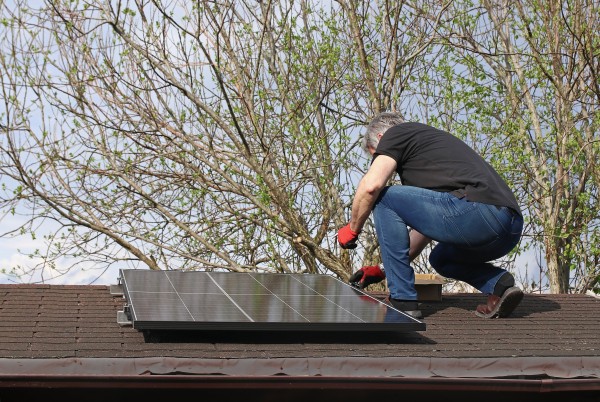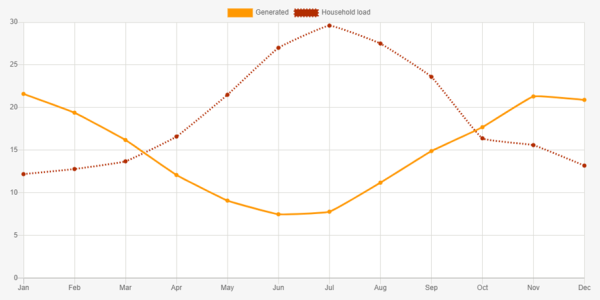Rooftop solar in Aotearoa: Are we missing something?
Daniel Wright is a Senior Consultant at MartinJenkins, and a keen observer and sometimes adviser on issues related to the energy market. This article has been prepared to help inform a layperson's chat at a Christmas BBQ with their favourite uncle.

Flying into Melbourne or Sydney on a sunny day, if you look down out of the window the city will sparkle like glitter as the sun catches the sea of urban rooftop solar panels. Some estimates suggest that 30% of detached homes in Australia now have solar generation installed, and that number is expected to continue to grow rapidly. Solar generation now provides about 14% of Australia’s total generation, and is supporting the country’s journey towards its goal of 82% renewable generation by 2030.
You won’t make the same observations flying into Auckland, Wellington, or Christchurch. In Aotearoa, according to our Electricity Authority, only about 2.6% of residences have distributed generation installed (usually solar panels), making up less than 1% of total electricity generation.
Australia has a range of generous subsidies, both state and federal, for rooftop solar installations, to help get the Australian grid to 82% renewable by 2030. Here in Aotearoa – hot on the heels of COP 28 and our Climate Commission's recent advice to the incoming government – should we be making a tactical turn and adopting policies and subsidies similar to our larger neighbour?
Solar generation fits perfectly with the shape of Australian demand, but not so well with ours
Solar panels generate the most electricity in the sunny periods in the middle of the day, and they generate more electricity over summer when the sun is up for longer. That’s perfect for a country like Australia whose residential electricity consumption increases over summer, as households blast the aircon. Australians installing rooftop solar can now expect to break even on the investment in about three and a half years.
With our more temperate climate, New Zealand doesn’t have the same residential demand spike over summer. While some Kiwi run air conditioning in the summer, our residential peak comes from heating our homes in the winter – which is not particularly well-aligned with solar generation.
The shape of our daily demand doesn’t help either. We generally consume the most electricity in the early morning, from 7 to 9 am, and early evening from 6 to 8 pm, when solar panels are generating little or no electricity because the sun is down or low in the sky.
Simply put, solar panels generate electricity most when we need it least, and generate the least when we need it most.
The graph below, created with the GenLess solar calculator, shows my expected annual demand against what I could generate with a rooftop installation.

Solar generation is most beneficial when it’s consumed on site, because then you don’t need to distribute it through a network and balance it with other generation types. That’s reflected in pricing incentives: using electricity from solar panels means you save 20 to 30 cents per kWh, whereas you can only get about 9 cents per kWh when selling back to the grid. Various solar companies estimate it takes seven to nine years to break even on a solar investment in New Zealand – more than double the time in Australia.
We also have a lot of renewable generation in the system already
Australia’s national grid relies heavily on fossil-fuelled generation: about 69% of total generation in the last year, with 17% of total generation coming from the particularly dirty, lignite (or “brown”) coal. That means new solar generation has a much higher chance of offsetting expensive and dirty fossil-fuelled generation.
Compared to Australia, New Zealand has a relatively green grid – 87% renewable in the last year (though remember the high rainfall of the last 12 months has been very helpful for generating electricity from hydro), and only a small amount of baseload fossil-fuelled generation. That means that new solar generation is less likely to offset fossil-fuelled generation and will often offset hydro generation.
We just have better options, like wind
Australia’s solar resource is abundant – it’s just sunnier there. Nelson is New Zealand’s sunniest city, with about 2,400 hours of sunshine per year – that’s on a par with Australia’s least sunny city, Melbourne, and pales in comparison with Perth (3,200 hours) and Brisbane (3,000 hours). Therefore solar panels going up on an Australian roof will, on average, generate more energy in any given year than in New Zealand.
If that made you glum with Vitamin D deficiency, there’s a consolation in another helpful, abundant energy source to help us decarbonise – wind. New Zealand sits along the roaring forties – the strong winds along the latitudes between 40° and 50° South, which presents great potential for renewable generation.
Further, wind generation doesn’t have the strongly negative correlation with our electricity consumption as does solar generation, in that wind doesn’t have the same day/night patterns. And while it’s true there is less wind in winter when our consumption is higher, that seasonal decrease is much less marked for wind than it is for solar.
We’ll still need solar generation, but grid-scale solar farms may make more sense
Over the coming decades, we will close our fossil-fuelled generation plant, and increasingly rely on intermittent renewable generation sources. Managing demand against intermittent generation is a topic for another article. But solar can help us diversify beyond our reliance on wind and hydro generation in future, which can help fill some of the intermittency gaps in our grid.
The cost of solar panels has been falling quickly, but installation costs, which are highly dependent on labour, are unlikely to reduce much further. Bespoke installations in individual houses are labour-intensive, often requiring scaffolding, for example.
Conversely, grid-scale solar farms offer opportunities for labour efficiencies, which can significantly reduce the installation costs per MW. Genesis, for example, is planning 500 MW of utility-scale solar generation in the next five years.
However, rooftop solar will make households more resilient
When Cyclone Gabrielle smashed into the North Island in February 2023 and the Redclyffe substation flooded, about 40,000 homes lost their power. It took weeks to fully restore power. Those with solar panels installed on their roof, with home batteries, were much more fortunate, able to keep their freezers cold and run appliances during the day.
Gabrielle won’t be the last major weather event to knock out power for long periods. And after the devastation from that cyclone, it’s likely that households across the country will want to think about their own resilience against network outages, especially as we increase our reliance on electricity. But they should do so without expectation that it will help decarbonise the grid, or save them much money.
And distributed batteries with solar panel systems could help local resilience
Companies like SolarZero are rethinking the charging model for residential solar and battery installations, and the roles they can play.
SolarZero offers solar and battery as-a-service, where the company continues to own the equipment and charges the user a subscription-type fee. The company then uses the battery in the distributed electricity network to supply capacity to the local grid when local prices increase, due to things like network problems. That model of distributed short-term capacity could help manage localised network stresses.
As with the benefits of rooftop solar for resilience at the household level, the SolarZero model demonstrates that, although rooftop solar is unlikely to be significant for Aotearoa as a way of reducing emissions and slowing climate change, the technology can still help our communities with the pressing issue of how to adapt to the effects of climate change.
Author’s note: We’ve written articles on similar things in the recent past, like: